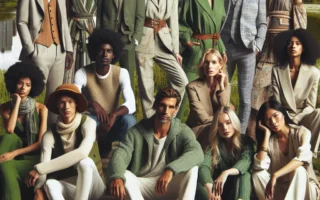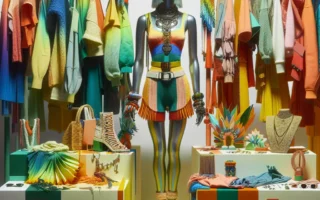Transitioning Runway Trends to Everyday Wear
Transitioning runway trends to everyday wear is a fascinating process that shapes the way people express themselves through fashion. Fashion designers play a pivotal role in influencing everyday style by introducing new trends on the runway. However, for these trends to become viable options for everyday wear, they must undergo a transition that takes them from the catwalk to the streets.
This process involves various aspects, including accessibility, functionality, and adaptability. Designers and stylists work to reinterpret high-fashion looks into practical and wearable pieces that resonate with the everyday consumer. This often means re-imagining extravagant runway ensembles into versatile separates or incorporating trend elements into classic wardrobe staples.
Additionally, the use of different fabrics and materials can be essential in transitioning runway trends to everyday wear. While the runway may showcase elaborate and delicate textiles, everyday wear requires fabrics that are durable and easy to care for. This shift in materials ensures that the essence of a trend is retained while making it suitable for regular use.
Another critical aspect of this transition is the consideration of comfort and lifestyle. Runway trends are often bold and dramatic, but for everyday wear, practicality is key. Designers and fashion influencers strive to strike a balance between style and comfort, making trends more approachable for the general public.
Ultimately, the process of transitioning runway trends to everyday wear is a meticulous craft that involves understanding the needs and preferences of the modern consumer. By adapting high-fashion concepts into wearable, street-ready styles, the influence of runway trends on everyday fashion remains a compelling and dynamic force in the industry.
How Fashion Shows Influence Street Style
From the runway to the streets, fashion trends play a significant role in influencing everyday style. Fashion shows serve as a crucial platform where designers showcase their latest collections, setting the stage for what’s to come in the world of fashion. These runway presentations not only dictate what will be en vogue in the upcoming season but also have a profound impact on street style.
One of the key ways in which fashion shows influence street style is through the propagation of new trends and styles. Fashion designers and brands often set the tone for the season by introducing innovative designs, colors, and patterns on the runway. These trends are then picked up by fashion influencers, celebrities, and style enthusiasts, eventually making their way into everyday wardrobes.
Additionally, the street style scene outside of fashion shows has become a runway in its own right. Photographers capture the sartorial choices of attendees, providing real-time inspiration for fashion enthusiasts worldwide. As a result, the fusion of high fashion with street style has become seamless, with influencers and fashionistas translating runway looks into wearable, everyday ensembles.
Furthermore, the democratization of fashion through social media has accelerated the pace at which runway trends influence street style. With platforms like Instagram, fashion lovers can instantly access and emulate the latest looks from fashion weeks around the globe. This instantaneous dissemination of trends blurs the line between high fashion and street style, allowing individuals to actively participate in and shape the ongoing sartorial conversation.
In conclusion, fashion shows play a pivotal role in shaping street style by introducing new trends, providing inspiration for everyday dressing, and blurring the boundaries between high fashion and streetwear. As a result, the symbiotic relationship between fashion shows and street style continues to redefine and reinvent the fashion landscape, bridging the gap between the runway and the streets.
The Intersection of High Fashion and Everyday Wardrobe
When it comes to the intersection of high fashion and everyday wardrobe, the influence of runway trends on street style cannot be overstated. Fashion trends that debut on the runways of Paris, Milan, New York, and London inevitably make their way into the wardrobes of everyday individuals around the world. The democratization of fashion has led to an increasing overlap between high-end couture and casual everyday wear.
One of the key factors driving this intersection is the phenomenon of “fast fashion.” Retailers are quick to replicate the latest runway looks at affordable prices, making high fashion trends accessible to a wider audience. Additionally, social media platforms and fashion influencers play a pivotal role in bridging the gap between haute couture and everyday style, as they showcase how to incorporate high fashion elements into daily outfits.
Moreover, the blurring of lines between high fashion and street style has led to a more eclectic and individualistic approach to dressing. People no longer feel constrained by traditional fashion rules, and instead, they embrace self-expression through their clothing choices. This has resulted in a fashion landscape where luxury handbags are paired with athleisure outfits, and sneakers can be found alongside designer dresses.
In essence, the convergence of high fashion and everyday wardrobe reflects a shift towards inclusivity and diversity in the world of fashion. As a result, runway trends are no longer confined to the elite; they now permeate the sidewalks and city streets, shaping the sartorial choices of individuals from all walks of life.



